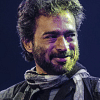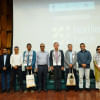Quota protests: Through the eyes of medical students

Historically, medicos have aided in almost all large-scale movements of this country. It's no surprise that they have taken part in the recent quota reform protests as well, be it on the streets or in the emergency room.
Students from different medical institutions in Dhaka and across the country have been participating in the protests from the very beginning and have expressed unity with their peers, both online and on the streets.
One such medical student, Akaash Chowdhury*, said, "It's harder for medical students to protest because we're very few in number and our academics are based on our impression to the faculty. Still, we've been speaking out. When the quota protests intensified, I went to Dhaka University (DU) to express solidarity with my friends. On July 16, almost all medical colleges protested the vicious attacks on students by goons in helmets, be it on a large or small scale. So did ours. But then all medical colleges were shut down alongside universities. So, we tried to help victims coming to our casualty department as part of our emergency response team. We didn't discriminate against anyone when it came to providing healthcare."
Students have often faced brutal suppression and physical violence for raising their voices in favour of quota reform. Peaceful on-campus protests were met with harsh retaliation from the student wing of the ruling party.
Aditiya Roy*, a student of Sir Salimullah Medical College (SSMC) recounted how a peaceful rally at his campus was disrupted by armed thugs, where they were attacked with bricks and eventually viciously beaten with rods.
"The thugs are currently threatening to beat us again when we return to campus. They've made a hit list. How are we to return to campus?" says Aditiya.
Even at the risk of physical harm, medical students worked alongside their teachers to provide emergency healthcare. Mokbul Ahmed*, a 5th-year student of another medical college, said, "Two of my friends and I went to college on the morning of July 19. After getting into the emergency room, we saw patients coming in with rubber bullet injuries from Jatrabari. A clash had broken out there. We stitched up an 8-year-old, who came in with a gash on his scalp from being hit by a stray brick. We have two emergency rooms with two beds each. Many of my classmates and juniors joined in to help in any way that they could. But after Jummah, patients started flooding in. Both emergency theatres were treating five patients each. Even so, there was a line of stretchers outside the emergency department. As med students, we're trained to deal with situations like these. But this was like being in a war zone," adds Mokbul.
When asked what kind of patients he'd witnessed, Mokbul said, "Almost all were gunshot injuries. I saw a fifteen-year-old with a bullet in his bladder. Another patient had a torn artery in his leg with blood gushing out. We packed his wound with gauge and started fluid channels in both of his hands. After his vitals were stable enough, we referred him to the National Institute of Traumatology and Orthopaedic Rehabilitation (NITOR). If he couldn't get there fast enough, they'd have to amputate that leg. The case that stuck with me was a student named Noor. He had an entry wound just above his heart. The bullet must've missed his heart and gone through his lungs. He couldn't breathe because of the pressure from all the internal bleeding. We fixed a drain tube in his chest. Half a litre of blood poured out. All this time, Noor was saying that he couldn't breathe. When he finally could, he thanked me. And then he asked if he could join the protests again the next day. I didn't know what to say."
Another 5th-year student, Ratul Haque*, said, "Some of us were volunteering from Thursday. After 12 PM, a rickshaw-puller came in first with blunt injuries from rubber bullets. A student from American International University - Bangladesh (AIUB) came in with a bullet injury below his left eye. Cases kept coming in till around 8 PM. Most came in with pellets or blunt injuries. On Friday after Jummah, casualties came pouring in. Now most of them had real bullet injuries. We provided primary treatment and referred them to specialised centres if necessary. One man came in with a bullet entry wound in his left eye and exit wound in his right one. The man was standing on a balcony. The bullet must've ricocheted. The case I can't forget is that of a 14-year-old boy. He came in with a bullet in his back. How can someone shoot a kid in the back?"
During a movement, everyone contributes in their own respective way. The recent movement saw a massively uneven distribution of power, where unarmed students were up against armed forces in full gear. In this reality, medical students have been trying their best to speak out against the atrocities being carried out. Alongside that, they've been using their skills to help save lives.
In a time of dire need, our medical students have responded with merit, with courage, and with the commitment to serve. The question remains: Why did the need arise?
*Names have been changed upon request
Mehrab Jamee is an activist at Sandhani, a medical student, and writes to keep himself sane. Reach him at [email protected]

 For all latest news, follow The Daily Star's Google News channel.
For all latest news, follow The Daily Star's Google News channel. 









Comments